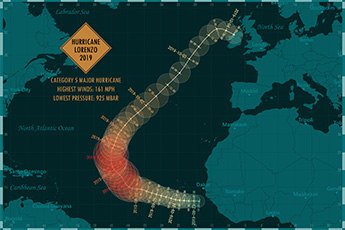The United States has seen several macro trends when it comes to migration. In the mid-1800s, many people moved to the rural Midwest to buy cheap land and make their living growing crops and raising livestock. The Homestead Act, signed by Abraham Lincoln in 1862, accelerated this trend as Manifest Destiny propelled migration from cities in the east to rural areas in the Midwest and beyond. Yet, the Industrial Revolution of the early 1900s brought many people back to the cities in search of jobs in factories and, by the middle of the century, offices. This trend continued into the 21st century.The COVID-19 pandemic in 2020-2021 shifted migration patterns once again. With companies adopting remote and hybrid work models, many urban dwellers left high-cost cities that had been effectively shut down for the suburbs or even rural areas, where they could pay lower rents or get more home for their dollar than in the city. According to data from JPMorgan Chase, we’re seeing another shift — this time, from the suburbs back to the cities as many suburbanites seek to recapture the benefits of urban living. This is especially true among younger generations who value the lifestyle conveniences and amenities offered by urban centers, such as plentiful public transportation options and easy access to restaurants, retail spots, and entertainment.Urban Resurgence and Shifting Migration PatternsThe pandemic resulted in a demand surge and supply shortage in suburban markets in late 2021 and early 2022. As supply has caught up, however, these markets are adjusting and normalizing. Since mid-2022, population losses in urban areas have subsided and urban-to-suburban migration patterns have mostly reverted to pre-pandemic norms.Now that the pandemic-related surge to the suburbs has moderated, urban centers are seeing a demand resurgence that is redefining market equilibrium. An influx of people are moving back into both large and mid-sized cities all across the nation. For example, during the pandemic, large numbers of New York City residents moved to suburban areas of New Jersey, Connecticut, and upstate New York, but many are now returning to the city.Mid-sized cities like Nashville, Austin, and Boise are also experiencing in-migration. Nashville offers a relatively low cost of living and mild year-round climate, while Austin features a booming technology industry and a vibrant culture. Boise is attracting people from expensive West Coast cities such as Los Angeles and San Francisco, who are drawn by the low cost of living, a stable job market, and outdoor recreation options.Impact of Urbanization on CREUrbanization will have significant implications for commercial real estate (CRE) in 2025 and beyond. Community financial institutions (CFIs), with their deep understanding of local markets and strong relationships with small businesses, are well-positioned to meet the financial needs arising from this urban resurgence.Here are a few CRE opportunities to keep an eye on in 2025:
- Multi-family housing. One opportunity is the rising demand for multi-family housing. Of those returning to urban centers, some are renters who struggle to afford rising rental prices, so there is a greater need to provide affordable housing at market-rate values. According to Emerging Trends in Real Estate 2025, published by PwC and the Urban Land Institute (ULI) Americas, the multi-family housing market will be shaped mainly by supply in 2025. Demand is expected to remain strong, due to a solid job market.
- Mixed-use spaces. There is also a higher demand for office space and retail outlets in city centers. Mixed-use developments that combine residential, commercial, and recreational spaces — also known as “live, work and play” — are especially popular among city dwellers who place a high value on convenience, transit, and accessibility. Millennials are now the largest generational cohort in the workforce, and their preferences in terms of lifestyle and workspace are vastly different from previous generations. They value collaboration, flexibility, and work-life balance, which is driving the demand for urban mixed-use developments and dynamic coworking spaces. Aging baby boomers are also flocking to these developments, as they make retail and dining options physically easier and safer to access for those with mobility issues.
- Coworking hubs for small businesses. Once-vacant office spaces are now filling with hybrid workers or remote workers looking for a quiet space for meetings and focused work. Entrepreneurs and small businesses, including sole proprietorships, might be seeking these spaces for private offices as well. For commercial borrowers looking to develop office buildings to meet this demand, CFIs can provide construction loans and long-term financing.
CFIs should take note of the urbanization trend when planning growth strategies for 2025 and beyond. Providing vital funding for multi-family housing, office spaces, and mixed-use projects not only positions these institutions for growth but also cements their role as essential partners in building stronger, more vibrant urban communities.




